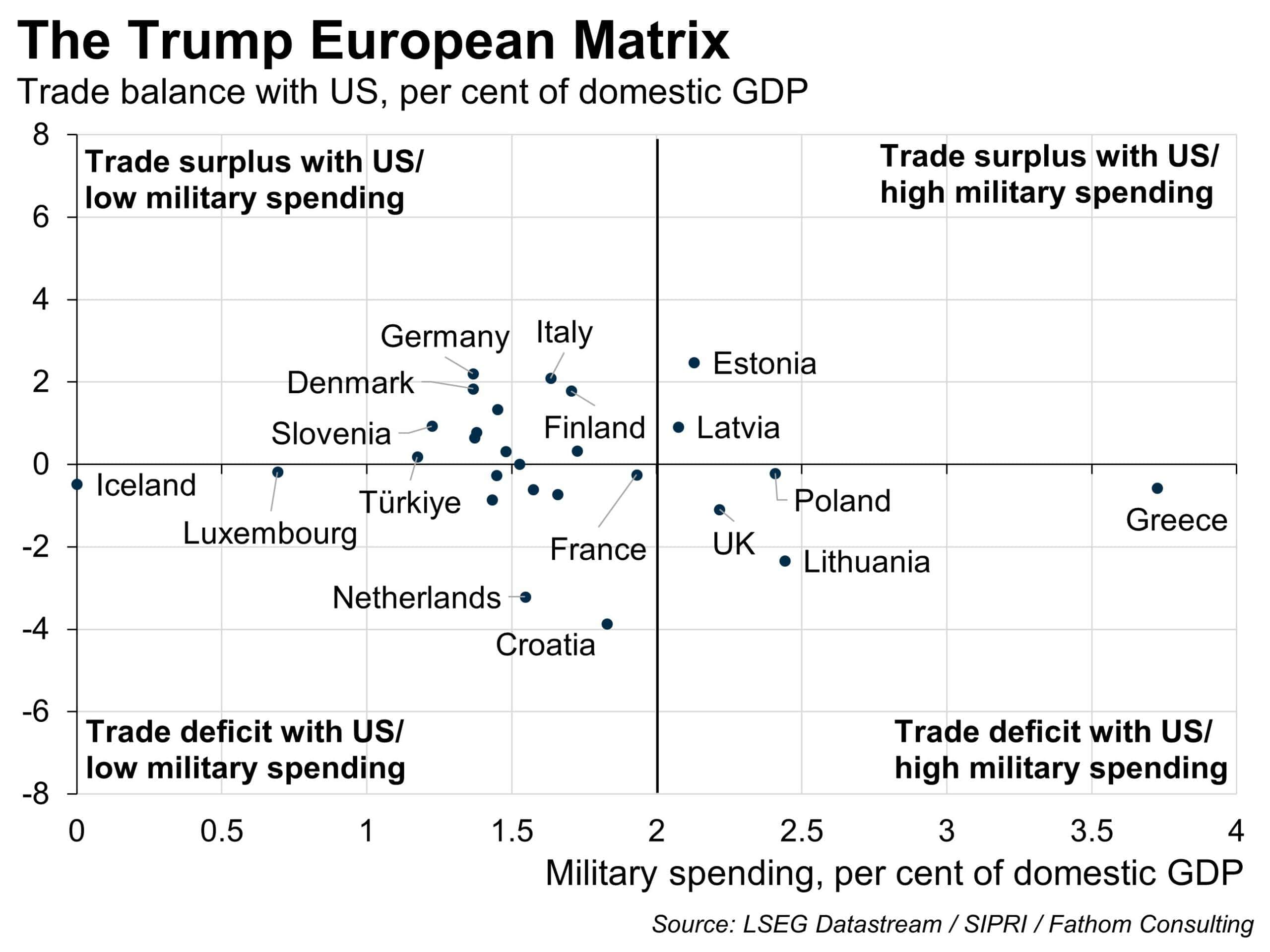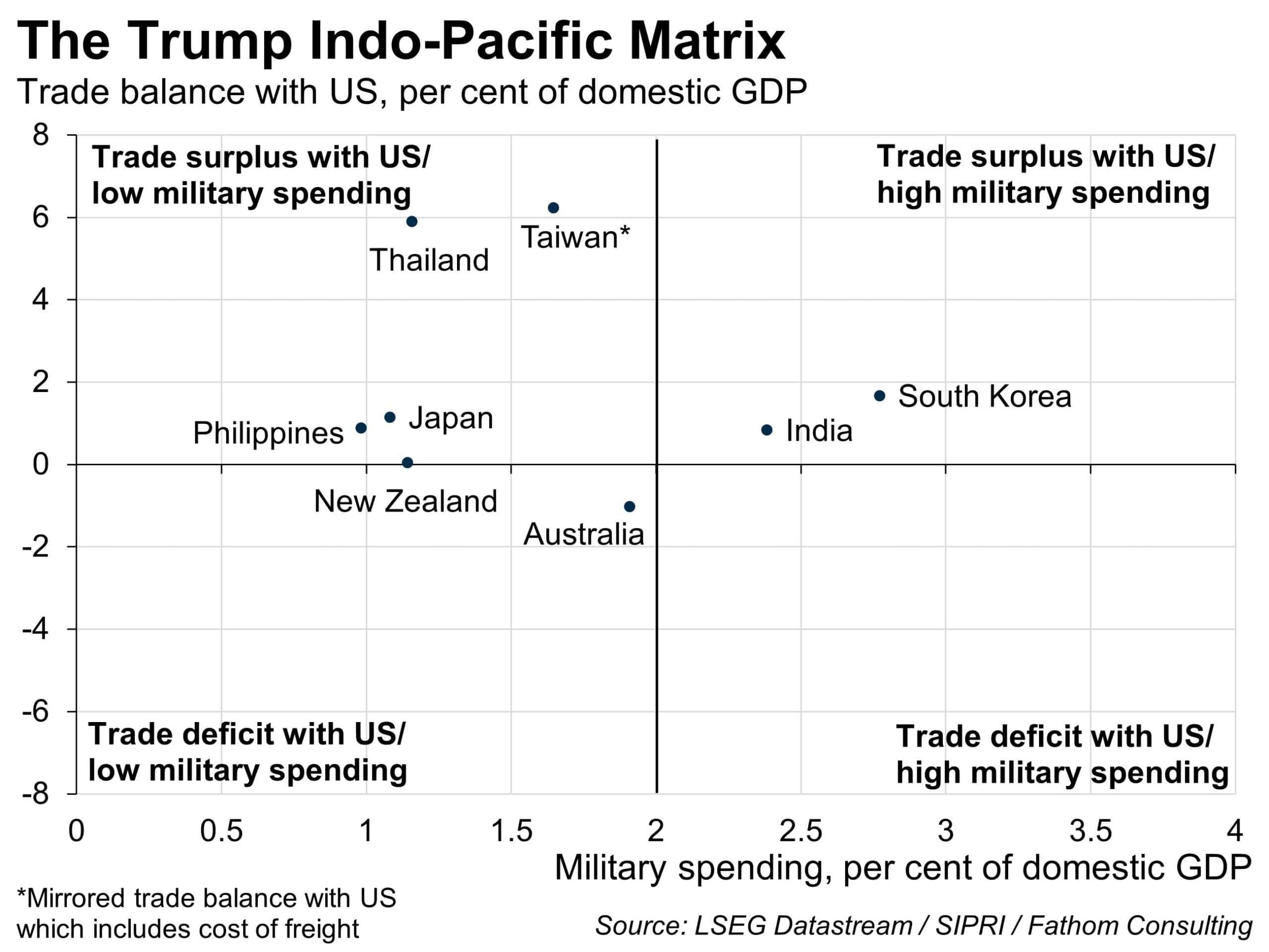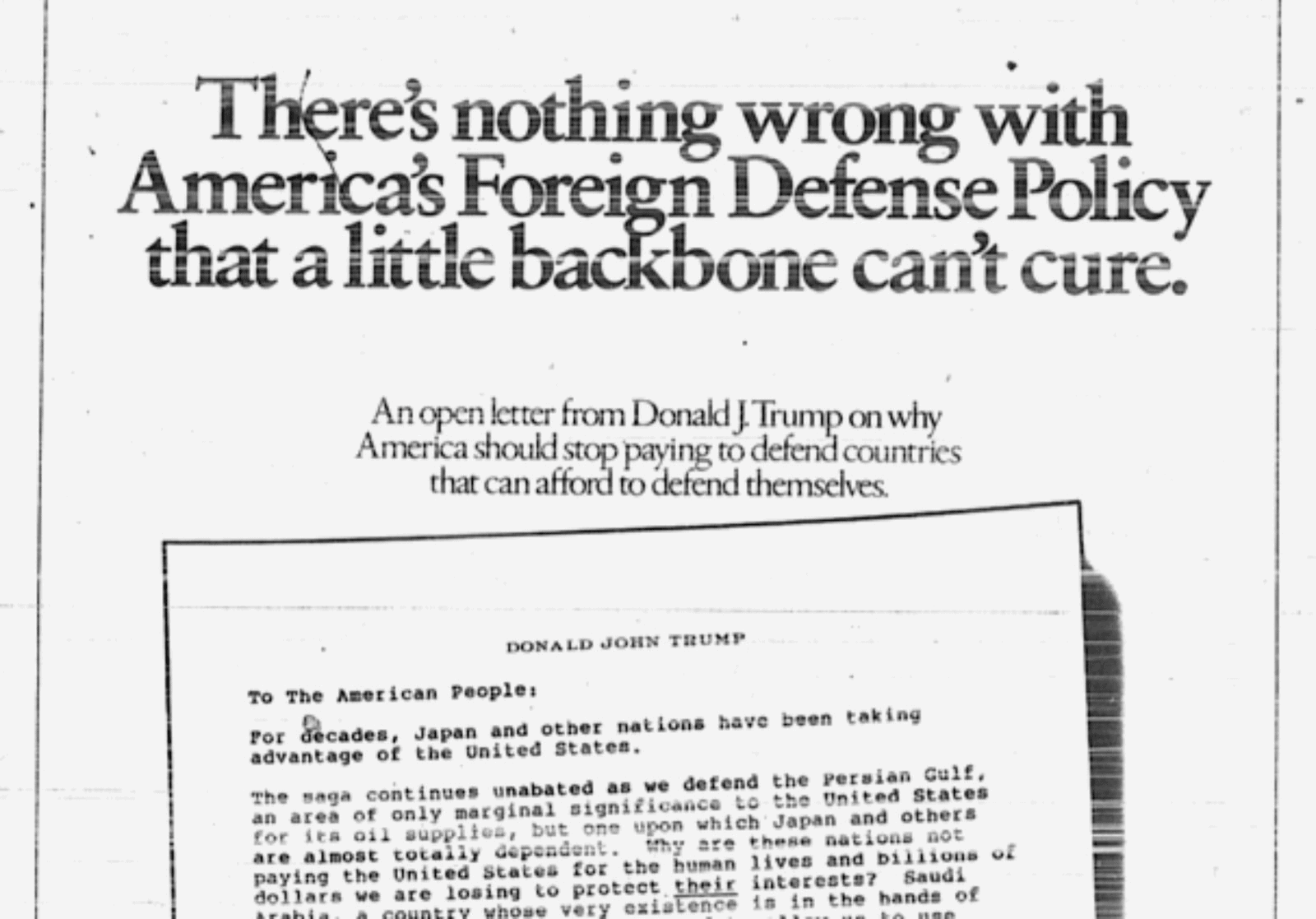A sideways look at economics
With eight months until election day, Donald Trump is favourite to be the next US president. A lot can change, but current polls suggest voters remain upset with Joe Biden’s handling of the economy and concerned by his age. What would a second Trump term bring? Fathom’s base case is that some of his more outlandish rhetoric won’t get turned into reality, consistent with a scenario we have previously termed ‘Trump Lite’. However, it would be irresponsible to ignore his words completely. And there is the potential for a ‘Donald Dark’ scenario, where international cooperation on trade and security falls apart. This is something European countries in particular seem to be preparing for.
“Take him seriously, not literally.” It’s a nice phrase, but one that makes it difficult to assess Mr Trump’s policy priorities with any accuracy. One way round this is to look at issues where he has a long track record. Two of his most consistent policy positions relate to free trade and military spending. As far back as the 1980s, Mr Trump is on the record criticising the rules that govern international commerce: “The fact is, you don’t have free trade. We think of it as free trade, but you right now don’t have free trade.” To his mind bilateral trade balances are zero sum, and creditor economies are taking advantage of the US. He has been consistent on what he thinks the solution is: “I believe very strongly in tariffs…We’re a debtor nation, and we have to tax, we have to tariff, we have to protect this country.” This approach guided his policy towards China. Now he seems to be mooting a 10 percentage point tariff increase for all countries, with China potentially facing a tariff rate of 60%.
In a similar vein, Mr Trump has been worried about US defence commitments. He took out a full-page ad in the 1980s to criticise US foreign policy. “For decades, Japan and other nations have been taking advantage of the United States. The saga continues unabated as we defend the Persian Gulf, an area of only marginal significance to the United States for its oil supplies, but one upon which Japan and others are almost totally dependent.” This theme has become particularly pronounced around NATO, with the 45th POTUS regularly lambasting fellow member states for not meeting the spending target of 2% of GDP. Recently, he even mooted encouraging a Russian invasion of NATO states if member states didn’t fulfil their spending pledges.
Fathom created a Trump Matrix to highlight those countries that are most likely to draw his ire. On the vertical axis, we plot individual countries’ trade surpluses with the US as a percent of their GDP. Countries further north sell more to the US than they buy from them. On the horizontal axis, we plot military spending as a percent of GDP. [1] Figures below 2% may receive a frosty reception in the White House. The worst place to be is in the top left quadrant. Countries here risk being seen as free-loading deadbeats. Germany is comfortably positioned there. And France is close to sneaking in, too. It’s no wonder the EU Commission recently unveiled a European Defence Industrial Strategy to boost spending and reduce the bloc’s reliance on the US. The special relationship, however, looks solid: with a bilateral trade deficit with the US and spending more than 2% of its GDP on the military, the UK is one of the few European countries that may get away with arguing that its bilateral trading relationship is ‘fair’ and its military obligations have been met.

Security under a second Trump term has been widely discussed in terms of Europe, but developments in Asia seem to be flying more under the radar. The Trump administration labeled China a “strategic competitor”, and many have voiced concern about the speed of Beijing’s military buildup. Major US partners in the region score poorly on the Trump Matrix. Almost all have a trade surplus with the US, while only India (unaligned) and South Korea spend more than 2% of GDP on the military. Mr Trump seemed to enjoy a strong relationship with Prime Minister Modi, and India-US ties could blossom further, based on the chart below. However, other partners may come under the cosh. With large surpluses and relatively low military spending, there is a question about the sustainability of US defence guarantees. Leaders in Taiwan may come under particular pressure, given their large surplus and relatively low military spend. European leaders seem to be waking up to a more uncertain international environment. Is it time for Asia to follow suit?


More by this author